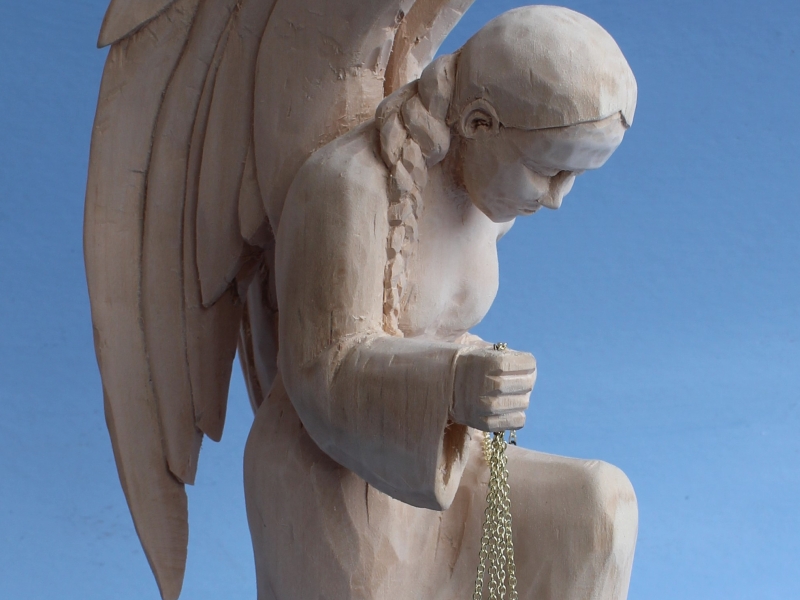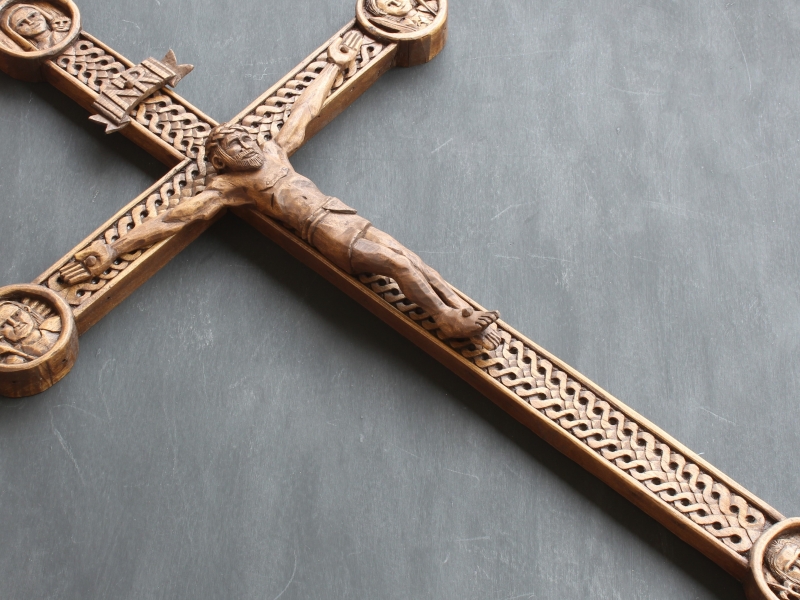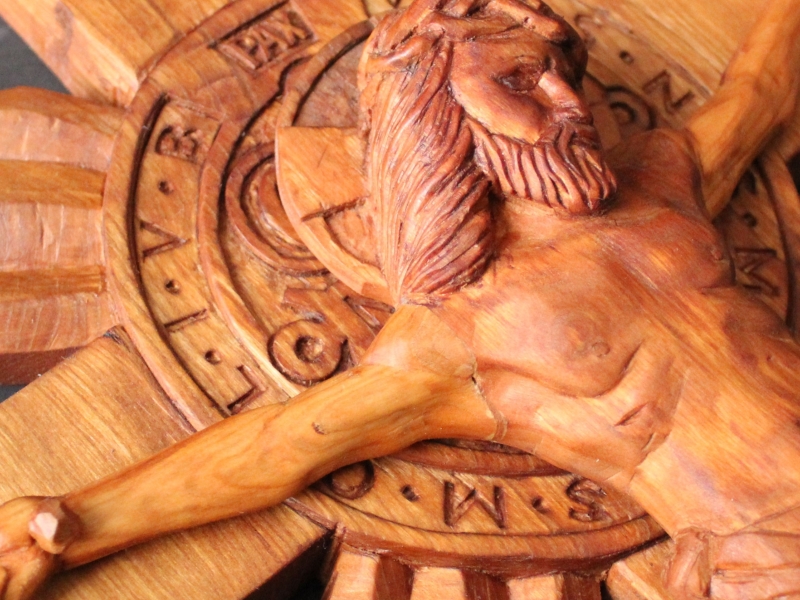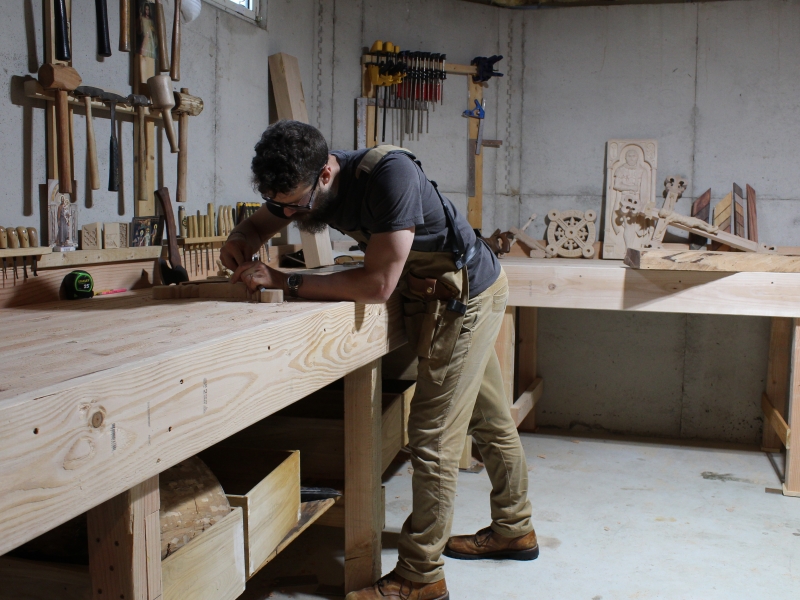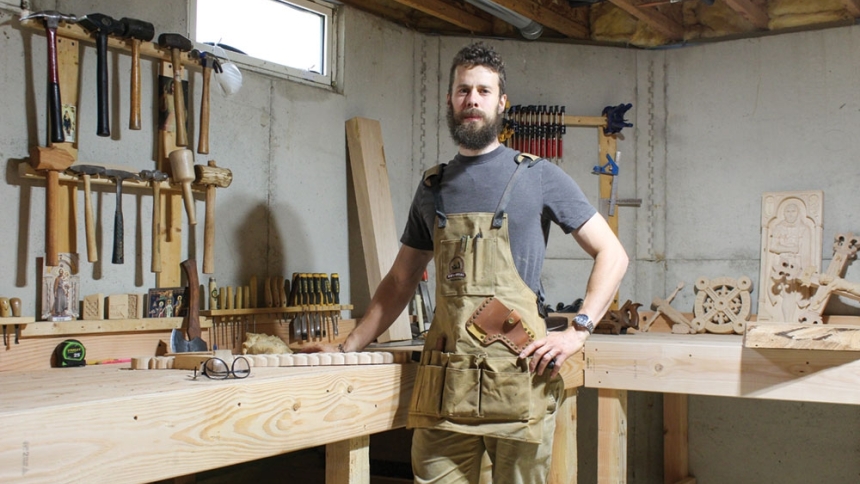
It is no accident that when God became man, He became a craftsman, writes DeWitt-based woodcarver, Benjamin Stenlund, pictured, who is also a married Catholic father of five. He continues:
The Creator of the universe became the creator of houses, tables, and other such things of wood. He was a carpenter. Indeed, there is something primal about shaping wood, an urge deeply human. Of all the animals, only man shapes, splits, cuts, and carves wood. We, like Jesus in Nazareth, create new things out of what God has first created, using the abilities and gifts given us by God. This is true of everything we create, but it applies in a particular way to handicrafts, since the connection between creator and creation is so intimate and immediate. One cannot digitally build a physical table.
I started carving with only a utility knife and a scrap of pine board left over from a bookshelf. My friends make fun of me for my habit of getting an idea and starting a project without half of the required tools or knowledge, but I have found that it works for me. Trial and error have been my greatest teacher. So I dive in.
Now, once I am in over my head, I begin to search for the solution to my problem. If only I had that size gouge! If only I had that kind of clamp! I have come up with countless workarounds to the obstacles, some more successful than the rest, and only occasionally have I had to resort to buying something new. That said, carving knives, chisels, and gouges are indispensable, and you will not catch me using a utility knife for carving again.
My own spiritual journey is in some sense parallel. I do not know the right way to pray, or the best way to be holy, or how to raise my children to be saints. But I start doing it, just jump in, because if I do not, I will never try, never start. Over time, I have learned bits here and there, read this book or that article, talked to wiser men and women than myself, and have also had the tremendous blessing of having been a seminarian for two years as well as a missionary. In the spiritual life, like in woodcarving, it is often the oldest tools that remain the best.
There was a time, before the Industrial Revolution, when everything one had was handmade, either at home or by a skilled craftsman. One had fewer things as a result, because everything would have been relatively more expensive, but such items were also better made and more repairable should they break.
G. K. Chesterton famously said, “If a thing is worth doing, it is worth doing badly.” This is not an excuse for doing a poor job when you could do a better one, but rather for doing things as an amateur, instead of trusting everything to the professionals and experts. So, too, with my woodcarving, and with my spiritual life. Everyone is called to be a saint, not just the smartest or holiest or most penitential. Christianity is not a religion of the elites. Nor has the Church’s art been an art of the elites. Yes, in the great churches in the great cities, they had the great artists, but the small churches in the small towns were carved and painted with no less love, even if those who did the work are anonymous.
Catholicism is hands-on, roll-up-your-sleeves, physical. We have the smells and bells, the oils, the water, wine, and bread. It is neither intangible nor abstract, not all up in our heads or purely spiritual. So we Catholics must put our hands on every part of it, making the faith physically present in the church and out of it. Why not paint a picture of the Sacred Heart and put it in your home? Even if it is not perfect, it will help you to grow in humility each time you look at it. Each of us should be able to say, “Lord, this is my best effort to give you glory.” Not, “This is some professional’s best effort” or “This is Amazon’s best effort.” And then, having given our best effort, we ask the Lord to multiply our talents so that we may do even better the next time. And buy a new carving knife to replace that old utility knife.
* To see more of Benjamin’s work, visit his website: benjaminstenlund.com

